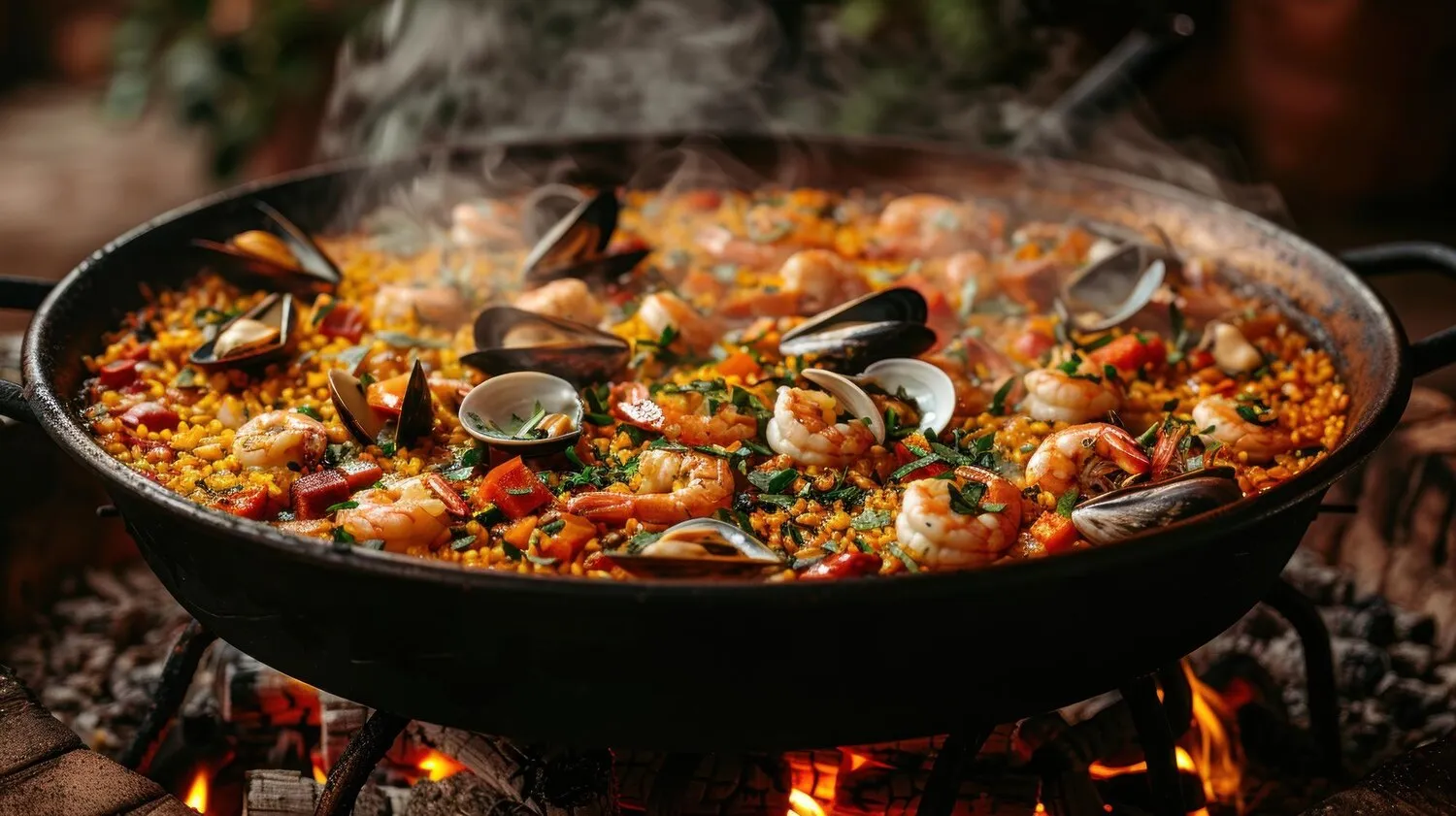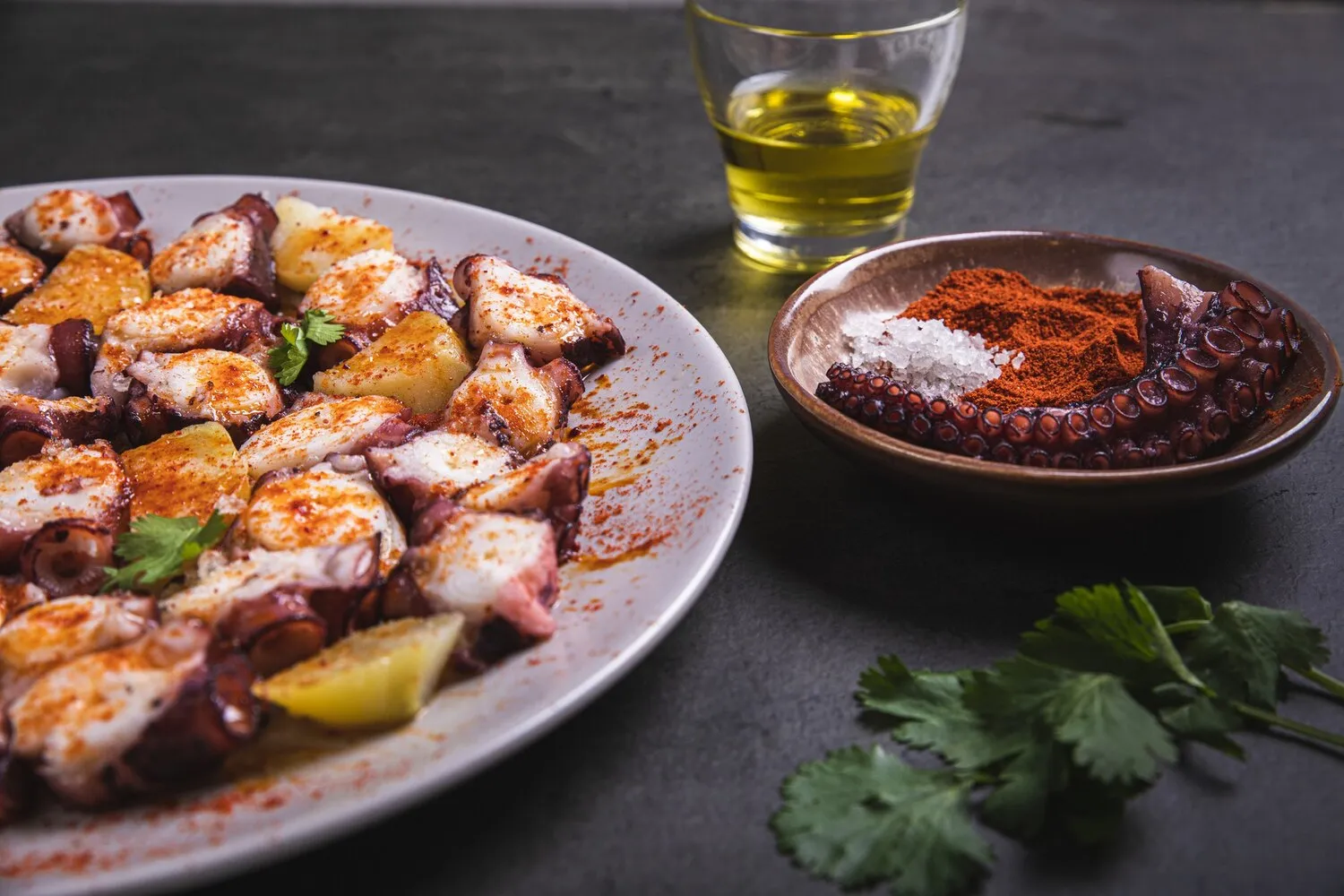
Paella
Traditional Spanish rice dish
Nutrition Facts
* The % Daily Value (DV) tells you how much a nutrient in a serving of food contributes to a daily diet. 2,000 calories a day is used for general nutrition advice.
La Garriga
Paella originated in the fields near Valencia on the eastern coast of Spain. It is believed to have evolved from the need for farm laborers to prepare a nutritious and portable meal over an open fire using available ingredients. The dish reflects the influence of Moorish irrigation techniques that allowed for rice cultivation, alongside the availability of local ingredients like seafood, vegetables, and meat.
Paella is more than just a meal; it's a social event and a symbol of Spanish culture, particularly in the Valencia region. It is often prepared and enjoyed outdoors with family and friends, signifying sharing, celebration, and community.
Family Gatherings
Paella is frequently prepared for large family gatherings, celebrations, and fiestas. Its preparation is often a communal effort, with different family members contributing to the process.
Regional Variations
While the Valencian paella is considered the original, many regional variations exist throughout Spain, each reflecting local ingredients and culinary traditions. These variations may include different types of seafood, meats, and vegetables.
Symbol of Hospitality
Offering paella to guests is a sign of hospitality and generosity in Spanish culture. Sharing a paella is a way to connect with others and create lasting memories.
Paella offers a complex and savory flavor profile, defined by saffron-infused rice, the umami of seafood and meats, and the freshness of vegetables. The socarrat, the crispy bottom layer, provides a delightful textural contrast and intensified flavor.
The primary flavor is centered around the saffron-infused rice, which imparts a distinct aroma and subtle bitterness. Seafood, such as shrimp, mussels, clams, and squid, contribute a briny and savory depth. Chicken or rabbit adds richness and a meaty component. Vegetables like tomatoes, bell peppers, and peas provide sweetness and freshness. Smoked paprika often enhances the savory elements, and lemon wedges served alongside provide a bright acidity that balances the dish. The socarrat offers a toasty, caramelized flavor that is highly prized.
Use Bomba Rice
Bomba rice is a short-grain rice variety that absorbs liquid well and maintains its shape during cooking, making it ideal for paella.
Authentic Saffron
Use high-quality saffron threads and infuse them in warm broth before adding them to the paella for optimal flavor and color.
Achieve the Socarrat
Increase the heat during the final stages of cooking to create a crispy bottom layer (socarrat). Be careful not to burn the rice. Listen for a slight crackling sound.
Even Cooking
Ensure even cooking by rotating the paella pan occasionally during the cooking process. This helps to distribute the heat evenly and prevent scorching.
Resting Time
Let the paella rest for 5-10 minutes after cooking to allow the flavors to meld and the rice to settle.
Explore additional Spanish dishes and restaurants
Explore SpanishDiscover top dining spots and culinary experiences in Santa Cruz de Tenerife.
Explore Santa Cruz de TenerifeLearn more about the food culture, restaurant scene, and culinary heritage of Spain.
Explore Spain
